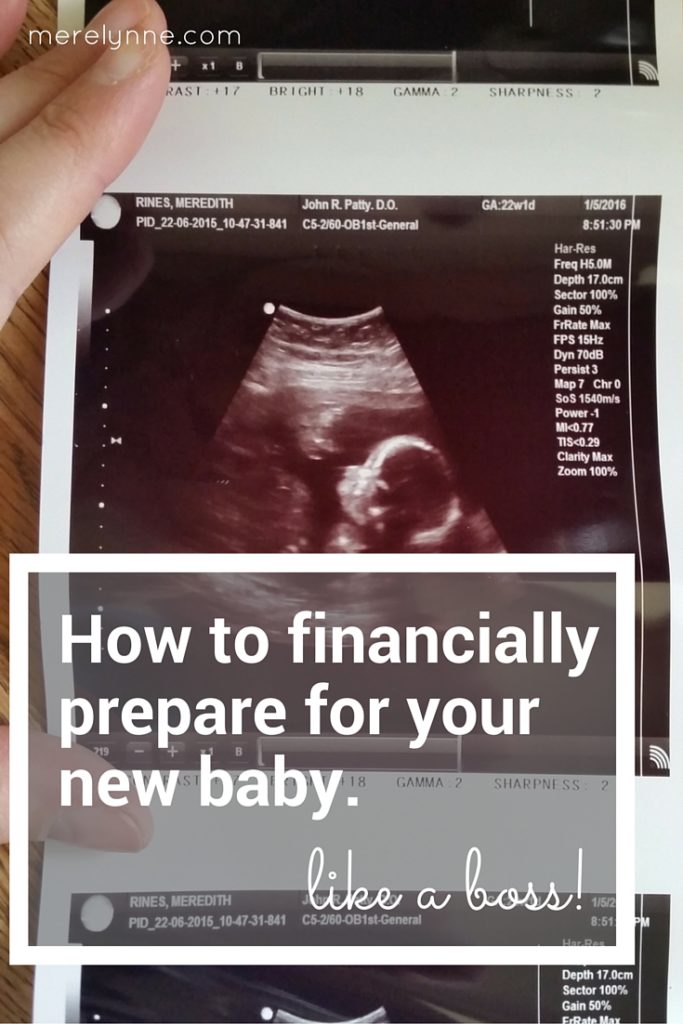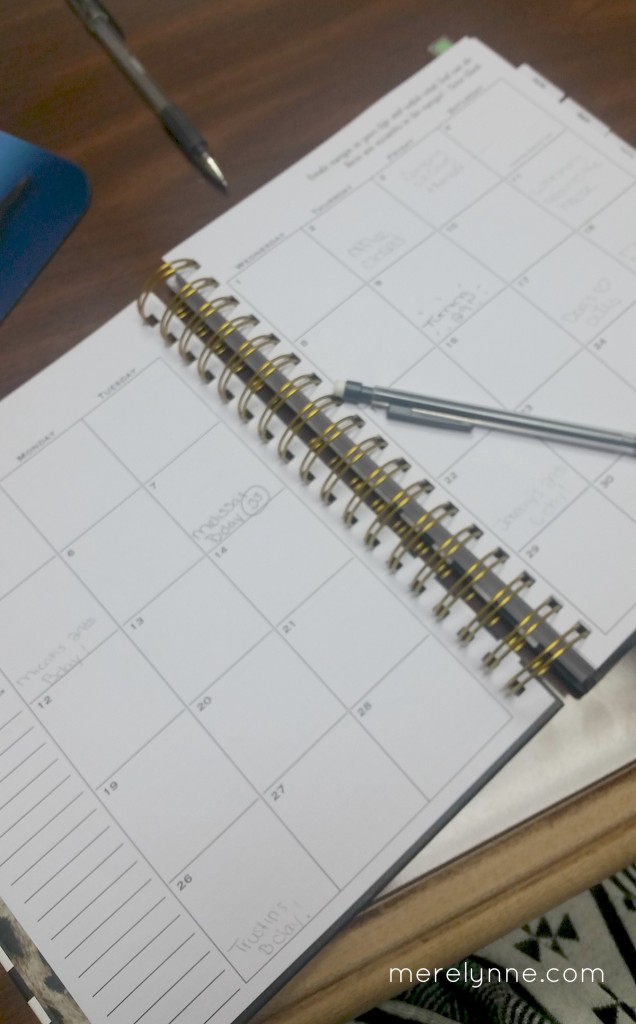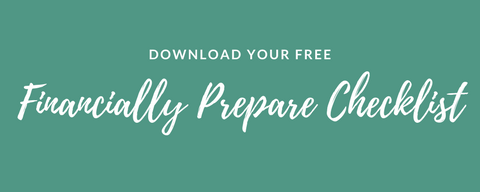
The other day J and I were having our usual discussion of going out for dinner or staying in. I know I’ve said this a hundred times…once I’m home then I hate getting back out, but I hate cooking even more!
After some serious thought and way too much time, we decided to stay in. Really the thought process went like this…
J: What’s for dinner?
Me: I don’t know. What do you want?
Me: I don’t want to cook and clean, that’s for sure!
J: Well we could go out.
M: Yeah, but I want to eat for cheap – like less than $20.
J. Well I don’t want fast food. So what do we have here?
There you go… I’m stuck on how much we spend and J doesn’t want crap food. So we stayed in and cooked. We cooked dinner together and then worked on the dishes together. It was a win-win-win. Win because we didn’t spend any money since we used what we had. Win because he had a healthy dinner. And win because I didn’t do it alone.
These small thought processes have overtaken us lately. As we’re preparing for the baby to arrive, we’ve been thinking more and more about money and teamwork. We’ve been taking a few steps here and there to prepare.
As you probably can tell, the theme for February is Focus on Finances. So today, we’re focused on financially being prepared for our soon-to-be baby boy.
I want to share how we’re financially preparing for baby with a small budget.
I mentioned a few weeks ago how we were making small budget changes since the beginning of the year, but I wanted to dig deeper into a few areas that are going to make a huge difference.

When we put together our master budget back in January, we talked about how our lives were going to change with a little one around. We knew that we would have late nights, long days and be overwhelmed at the beginning. We really have no idea what to expect. The one thing we did agree on is…
…we do not want to be thrown a financial curve ball when we’re lacking sleep.
So to overcome this fear, we started budgeting as if the baby was already here. We had two reasons for this:
- we didn’t want to face a financial hardship from our lack of planning.
- we wanted a financial plan for our money since we are going to have another person to care for and provide for.
Here’s what our budget looked like back in January – I have changed some of the numbers because, well, that’s private.
You will see two categories that may not make sense for a couple who doesn’t have a baby yet. Those are Groceries & Diapers and Daycare. Both of us will be working full-time so it’s important we find a daycare for our little guy.
We estimated the monthly increase to our grocery budget to cover diapers, wet wipes, and such. That way we could have a more accurate budget to go off of. Then after researching we discovered a daycare we liked and found out how much their weekly charge is. We figured by adding these expenses in now then we can start to learn what are spending will look like.
Honestly, I didn’t want to wake up one more out of diapers and not have the money in our account to go by them. That was a huge fear for me.
As a team, we decided to add these estimated expenses to our budget so we could be prepared.
Here’s what you need to do to add in your future expenses:
- Take an educated estimate of what the expense will be. Call around to get an idea of what it’s going to cost you. You may have to think outside of the box for any expenses you have coming up. For us it was daycare and a dog sitter. We knew when we traveled to visit family we probably wouldn’t be able to bring our 3 dogs with us the first few trips. So we factored in the increase cost of boarding into our budget.
- Figure this estimated cost into your monthly or weekly budget at least 6 months before the expense will start. This way you can get a feel for how it’s going to effect your budget. Now if you find out the cost is too much for what your income and other living expenses are then you can make any changes, find a less expensive option or see if it’s really worth doing. At this point you can also weigh other expenses you’re paying for to make sure they are still worth it. For instance, you’re budgeting for your newborn baby’s formula costs and learn it’s going to be a little too tight for comfort around the end of each month. Well maybe at that point you decide to lower your cable package to free up some cash at the end of the month. Small changes will make a huge difference. In the end it’s all about educating yourself before the stress of a newborn comes.
- A great tip is to physically transfer the money from your checking account into a separate savings account. This way your checking account will be accurate with your anticipated new expenses and you won’t feel tempted to spend money earmarked for a future bill. We transfer ours into our emergency fund because we know the account is off limits except when there is a legitimate reason. By placing the money into your savings account you will quickly build an emergency fund for those unexpected needs after your baby arrives.
I also recommend building your emergency fund to $1,000 plus what your insurance deductible is going to cost. A few weeks after your baby arrives you will start to receive your hospital bills. Luckily insurance will cover majority of the cost, but you could still be liable for a hefty deductible. Most deductibles range from $500 – $1,000 per person in your family (ours is $1,000 per person with a $5,000 family deductible). You will feel a huge relief by having an emergency fund of $1,000 (for those unexpected emergencies) and with an extra $1,000 to cover your insurance deductible.
To be able to save this extra money before the baby arrives, you can use a Sinking Funds Spreadsheet. It’s an a simple tool that gives you a clear view of what categories you need to be saving for and how much you should be putting aside each month to reach your goals.
After we added in the necessities into our budget, we started to look at items that we knew we would need versus the items we just simply wanted.
Needs vs. Wants
- Crib – to me a crib is a need. Sure you can make due with a less expensive bassinet, but for us a crib makes more sense. We know we want our little guy to be in his own bed starting at a young age. Plus our bedroom is small and there will not be room for a bassinet or a pack-and-play next to it. We have seen talk about a Dockatot and are curious about those. It might be something to invest in (or ask for as a gift), but we will cross that bridge later. So we plan on investing in a crib that will eventually change into his toddler bed. We have done research and our deciding on a crib from Walmart. We asked for one from my parents and they are amazing, so we are getting one. We chose from Walmart because it will be easy to exchange if something is missing from the box (since we live in a smaller town), plus they have the best price.
- Car Seat – again, this is a no brainer. We must have a car seat and I want one that is rated high. We found this car seat from Chicco and fell in love. It is rated very high on Consumer Reports for crash protection, which was vital to us. It’s important to research safety items for crash protection, ease of use and just overall satisfaction. That way you know you’re getting a quality piece that will last for a long time.
- Breast Pump – I do plan on breastfeeding so I know a breast pump will come in very handy for when I go back to work. By doing some research I discovered how to get my breast pump for free and I highly encourage you to do the same.
- Swing – I go back and forth on whether this is a need or want. Deep down I know it’s a want, but I realize just how much easier a swing will make things around the house. So I plan on asking for a swing for one of my baby showers and hopefully we will get one.
- Changing Table – We have a dresser in his room that is packed full of all his goodies. So in my mind I will be using this dresser as his changing table. I do not see the value of investing in another piece of furniture as a changing table. Sure they may have compartments and drawers specifically for diapers, wipes, and creams; however, this is one area that we can cut our costs.
- Special Bottles – Unless our little guy has bad gas, I don’t plan on purchasing expensive bottles. I have heard good things about Dr. Brown’s and their price is comparable to other bottles I found at the store. I think these can be good transition bottles from a newborn to older since they have interchangeable nipples for older babies.
Breastfeeding vs. Formula Feeding
We plan to breastfeeding and am hoping that it works out for us (my take on breastfeeding vs. formula feeeding). I think breastfeeding will be a huge money saver. Not only is breast milk like liquid gold, but it’s also free. If you have a small budget then breastfeeding is the way to go! However, if you decide not to breastfeed or can’t then DO NOT feel bad about it. The end goal is to have a healthy baby, so either way you get nutrients into their system is fine. If you decide not to breastfeed or find out you can’t, you just need to take the steps from above to add the expense into your budget.
Cloth Diapers vs. Disposable Diapers
For us we understand the added expense of disposable diapers, but this is the route we are still going to take. If you want to keep your budget with a little room then cloth diapers may be the way to go. However, we feel like we can make it work with disposable diapers. A lot of moms feel that cloth diapering is great and they love how it saves money, but that’s a personal preference. I like the ease of disposable and that draws me to them. My mother-in-law did tell me how when her twin boys (my brother-in-laws) were younger she received a subscription for a cloth diapering service. I think it was for the first year. This service would take away old diapers and bring new ones each week or so. I can imagine a service like that being invaluable and it might be worth it to add to your budget if it’s an interest.
Baby Clothes
One of the easiest ways to save money is on baby clothes. If this is your first baby then chances are you will be receiving lots of clothes from your baby showers. It seems clothes are one of the most gifted items to expectant mothers. If you need to fill in any gaps then buy USED. Consignment stores and yard sales are a great place to buy quality pieces at a huge discount. You may even be able to negotiate a lower price at a yard sales, which means even more savings.
Also, another way to save on clothes is if you have any good friends or family members who have recently had a little one. You can borrow the clothes their baby has outgrown. Hopefully the seasons will line out so it makes it easier on you, but even then you can probably make most of the outfits work even if the season is wrong. Because I don’t think it matters if you’re little one is wearing a Valentine shirt in March. If it fits then don’t worry about it.
Finally, you will want to reevaluate your budget once your baby has come. This is a great tool to get your new budget categories added, but reality could be much different. I created a recap of how this preparation really helped us after our little guy was here. We did a lot of things really well, but we didn’t fully capture everything we should have.

Just remember this technique can work for just about any big life change you have.
That’s what’s so great about it!
Getting ready to move? Take a look at what changes in income, if any, you’ll be facing. Have you looked at what the living expenses are going to be? There is so much to consider when planning a move…
rent increase (or mortgage)
insurance increase
grocery increase
gas for your (will you be driving further to get to work?)
and many, many more
Maybe you’ll be lucky and there won’t be any increases. Maybe the clouds will open up and you will actually have a decrease…
What about thinking of quitting your job to become self-employed. You need to really think about what your realistic income will be and try to start living off of it. There are some great articles out there on preparing to become self-employed. I really liked the one “How Much to Save Before Quitting My Job” by GoGirlFinance.
The biggest thing you have to do is plan it out, think it through and then commit.
Latest posts by Meredith Rines, MBA, CFP® (see all)
- How To 10X Your Productivity With This Simple Tool // Using A Red Line Graph - June 24, 2020
- Mini DIY Office Makeover [Photowall Review] - June 17, 2020
- How To Track Your Projects and Profit With Subcontractors - June 11, 2020





Hey, your article was very helpful, just one question, what percentage of your monthly income did you save for the baby?
We saved 10% of our take home amount for 9 months. Some months were easier than others to save that much. We weren’t perfect every time, but in the end that’s what we averaged. This is in addition to the savings we were doing for our emergency fund and for our year-end property taxes.